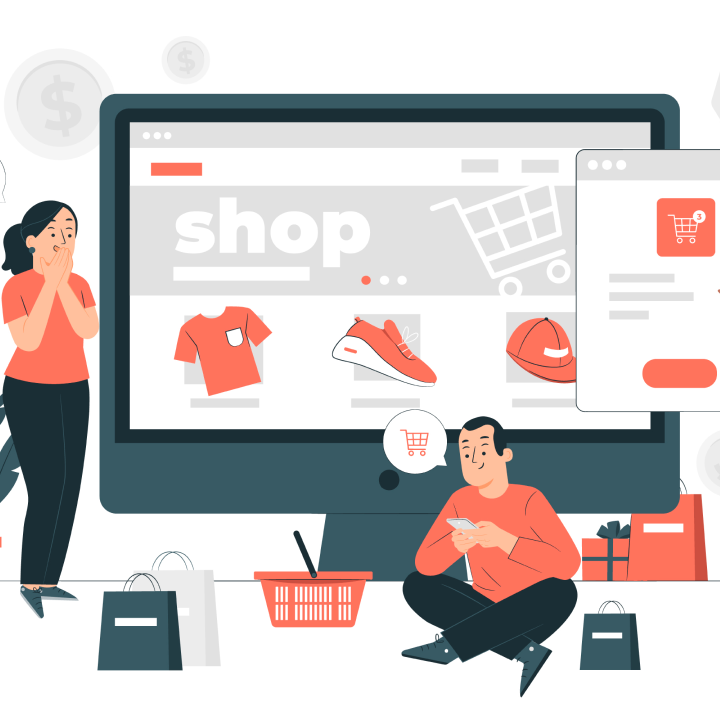The digital world revolves around two major aspects: “(Customers) Seeking High User Experience and (Brands) Delivering Exceptional Customer Experience.”

Technological innovation has allowed companies to find new ways to reach their customers where more and more buyers are turning to the online shopping experience and more sellers are joining the bandwagon.
#User-Centric Search
With affordable costs and bearable overhead expenses, a brand is established over a website first when compared to hopping on an application. And, an eCommerce website when sees around itself in the 360° angle, can find infinite competitor websites existing in parallel, striving and competing to leave its rivals behind.
To turn website visitors into customers, a website needs a strategic UX Design strategy as the design, layout, structure, and navigation facets of a website are greatly responsible for a stress-free purchase process, enhanced shopping experience, and desirable user actions.
So if your website design techniques aren’t rendering fruitful results or if you don’t have a UX design strategy in hand to convert leads into sales, prefer exercising the below-mentioned tips to transform the future of your eCommerce platform.
eCommerce Website Design Strategies to Boost Conversions
To exceed the cutthroat competition in online trading and business, a business owner must first assume that the smart audience is equipped with mobile devices and is using intuitive apps and services (apart from yours) and then find ways to attract their attention.
With this short guide to hand, I am sure you will be able to design your eCommerce store from a user’s perspective and acquire sales and revenue gains from your business’s perspective.
#User-Centric Search
Any web asset whether a website or an app must possess a search bar that gives auto-suggestions and is functional to get the accurate search results for the user query.
A search bar must be intuitive, suggestive, and super-resourceful for visitors to narrow their search about any product and must accept keywords or phrases to finish the search intent.
Prefer adding the search section on every webpage of your website as it enhances the usability of the website, lowers the abandonment rate, and boosts the conversion rates.
#Website Navigation
The navigation of the website or its web pages must be sorted in the shortest possible way to be found, maximum in three to four clicks.
It’s highly significant for a user to land on a page for what he is looking for in a fraction of the time as if they find this activity to be challenging, they may leave the webpage promptly, dropping you in a challenging situation to get visitors.
An eCommerce website must accommodate an intuitive navigation system that must run fast within a reasonable score of mouse moves and click keyboard presses, or any other action.
#Website Scannability
This is a factor that sets the first impression much sooner where the visitor decides within seconds whether he found something worth exploring.
People who land up to your websites with a vision to compare your quality, services, or products, usually tend to scan the markers that help them compare with other pages and this occurs within 15 s.
And is something we practice while searching for top websites that can quench our thirst for our search intent, thus, we can realize website scanning practically through our personal experience.
#Simple & Easy Sign-Ups and Checkouts
The checkout process must never be made complex, instead, must be streamlined and made easy to proceed with making transactions for purchase. The content of the visitor’s shopping cart must be always available and the process must be executed in a ‘one-page’ check-out structure that encourages conversions and further lowers down the friction.
Remember,
“Users should not get exhausted in their demand for actions.”
#Specific Search Filters
Faceted search allows users to select multiple attributes at a time and then look for particular products that appear in the categories after applying filters of choice. Filters could be anything from brand to size to color to font to product type, etc.
The filters in the search should be immediately apparent in the UI where the users must witness the applied and removed filters.
#Declutter CTAs
Call-to-Action (CTA) attributes are a must to have on a webpage but should never overcrowd a webpage especially on an eCommerce website where a user’s intent can be distracted through their excessive use.
The layouts and website design must be crafted keeping the target audience in mind and thus, be placed in the right number, strategically.
#Clear, Concise, Readable Content
The content for a webpage of any website needs to be well aligned with its design and layout. Even if you design an awe-inspiring website but keep content that is misleading or poor in quality or illegible or common, certainly your designing efforts will go in vain.
“Content accompanies your website designs, so present them in a legible manner.”
So, a webpage design of an eCommerce website must come up with clear text, useful information, and something that is readable and understandable by the readers.
#Product Thumbnails
Product thumbnails are those crucial aspects without which your product pages won’t be able to fulfill conversions.
And not only do the product pages essentially need thumbnails, but your check-out web page also requires product thumbnails to make it easier for the users to make a choice or reconsider the product when sealing the deal.
Instead of redirecting users back to the product page when they need to reconsider or check product details, ensure to get mini versions of your product to be displayed at the time of checking out.
#Interaction and Media
The webpage of a website should be able to do all the talking by itself. By this, we simply mean that adding unique but genuine pictures and videos of the product influences customers positively.
Adding different angles and models to your products endorses your work. Illustrations, graphics, banners, icons, infographics add a lot to providing descriptive value and make you a trusted vendor when you offer your product visuals in a deep connecting way.
#Website Speed Optimization
It’s regrettable and annoying when you will see your web pages taking too long to be displayed and accessed. Shoppers are used to accessing online content within seconds while browsing the web and if your assets fail to do so, they might switch to another eCommerce platform, maybe your next-door competitor.
Your website must be highly optimized to be opened on any browser or any device, making it convenient to access the website within a fraction of seconds with the minimum speed loading time.
#Customize the user experience
Suggestions or recommendations based on the past behavior of users is a good practice developed in eCommerce since it allows customers to find new products that they may like. Incorporating blocks of related products or those other people also purchased can be a great example of UX customization.
Develop your online store or improve it based on these good practices and manage to satisfy the real needs of your end-users and the business objectives of your e-commerce.
Or if you want CodeGlo’s expert usability team to analyze your digital business and propose the best optimizations to make, do not hesitate to contact us. We will be happy to learn more about your project.







